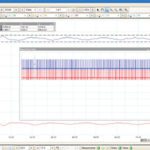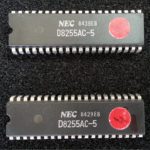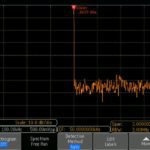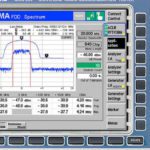The rise in social distancing has fostered a need for professional-grade test instruments that function as well at home as in the lab.
David Horn | Digilent
The events that have unfolded across the world since the beginning of 2020 have turned the global marketplace upside down. Few industries have felt this seismic shift as much as engineering, where companies and their employees have traditionally spent much of their time working in a hands-on capacity with numerous pieces of equipment in curated lab spaces and workbenches. The same is true for those electrical engineering students and professors that are being forced out of their comfort zones as well.
As engineers and students are reluctantly being asked to move those workspaces to their homes, the question remains: Is this a temporary solution or something that can be permanent? The truth is, innovations in at-home labs for engineering, flipped classrooms, and online work capacity in recent years have added the ability to serve more engineers, novice and experienced, without increasing the lab space. Whether or not they are having a consistent experience with their test and measurement equipment remains a separate question altogether.

Even before COVID-19 and its resulting fallout, engineering companies and universities were increasingly asked to support more while remaining under budget, tasking engineers, and academics to make more out of less. One of the most sought-after resource needs in engineering, besides time, is laboratory space, which happens to be an advantage of Digilent’s portable test and measurement devices. The introduction of portable test and measurement devices has added engineering to the list of jobs that can be done fully or partially remote.
Scenes of engineers having to take their turns in a secured laboratory for every measurement are becoming less and less frequent. Engineers are constantly asked to produce more, faster, requiring them to adapt and innovate to minimize their design cycle time, all while still meeting strict design requirements. Devices on the desk that could allow engineers to work from home or remotely just starting to creep into the engineering workplace when COVID-19 hit. These portable test and measurement devices, and what they can offer, will become critical pieces of the puzzle in the coming months of, “What now?”
Of course, a USB connected device cannot solve all the problems engineers face right now, but until we can get back into the lab, can it solve a lot of them? And once we’re all back in the office, can these devices continue to provide convenience, valuable and accurate measurements when a trip to the lab is just not fast enough?
USB and virtual instruments
It is useful to explore the difference between a USB-connected instrumentation device and a related approach called a virtual instrument. A virtual instrument consists of a PC equipped with software and hardware such as cards and drivers that together perform the functions of a traditional instrument. Software is the main element of a virtual instrument; traditional instruments are hardware focused. A virtual instrument performs three basic functions of a traditional instrument: acquisition, analysis, and data presentation.
Programs made in the instrumentation and control program LabVIEW are called virtual instruments, VIs. VIs consist of two fundamental parts, a front panel and a block diagram. Within the interface of the software, there is a table of utilities or set of pallets that contain all the functions with which modifications to the VI can be made.
While a VI can run on a PC, it differs from the approach used USB-based instruments that connect with PCs and use the PC for computational and display purposes. USB-based instrumentation software can take a variety of forms and doesn’t particularly conform to the front-panel/block-diagram structure used with a VI. However, some USB-based instruments can work with the VI programs created by LabVIEW.
One example is the Analog Discovery 2 (AD2). It contains 12 instruments typically found in an engineering laboratory and provides the ability to write custom tests and analyze data with the power of a computer. Many USB instruments focus on one specific set of measurements or tests, useful in one scenario but not for the broader range of measurements and tests needed throughout stages of design. The AD2 includes analog and digital instruments in the time and frequency domain.

Standard on any engineer’s benchtop is the oscilloscope, which is provided on the AD2, with a useful twist. The two-channel oscilloscope can measure single-ended signals with industry standard BNC oscilloscope probes or differential signals with MTE cables provided with the device. For tests that require stimulation as well as analysis, AD2 includes a two-channel waveform generator that can provide any number of predefined or custom waveforms for stimulus. The software interface – called WaveForms – also provides a network analyzer with the ability to generate Bode, Nichols, and Nyquist plots, among others, so designs can be analyzed and characterized across a wide sweep of frequencies.
Long-term measurements can be taken in the data logger, or in a record mode in the oscilloscope. No benchtop would be complete without a power supply, so there is also a provided positive and negative supply on the device. For quick measurements there is a simpler voltmeter interface as well.

The AD2 also provides more advanced instrumentation. When the need arises to quickly determine the frequency components in a signal, the spectrum analyzer can display signals in the frequency domain with two available channels. Also recently added is an impedance analyzer. When a design or load needs characterization, the impedance analyzer can quantify the inductive and capacitive elements.
Almost no engineer faces a modern design challenge involving only analog signals. While digital signals can be viewed and analyzed in the oscilloscope, the AD2 also provides a logic analyzer to automatically decode data, and a protocol analyzer to communicate with a variety of protocols including SPI, I2C, HDMI, and more. When the logic analyzer and oscilloscope are combined this way, both instruments can work in unison to run a real use case stress test.
For example, a designer of consumer electronics might have to test a motor and motor driver under real-world conditions. When compared to a traditional lab bench the AD2 provides all the instruments an engineer might need plus some not available in a typical lab.

The AD2 user interface is designed to be familiar to those having experience with traditional benchtop instruments. Additionally, it provides the ability to script or write custom applications. The simple script editor in WaveForms allows the AD2 instruments to run a custom test, or a custom decoder. For example, this facility might be used in generating an image from VGA signals or for comparing analog data to converted digital data as when examining the expected and actual result from a DAC under design.
The AD2 works with ordinary Mac, Windows, or Linux-based computers. Consequently, software updates can add features and even new instruments. To solve problems, engineers can talk directly to the developers of the products themselves on the Digilent Forum.
Taking up about as much desk space as a typical mousepad, the AD2 can be expanded with a variety of adapters and accessories. Another product, Analog Discovery Studio, provides the same functions as AD2 but also contains integrated BNC connectors, a more powerful power supply, and a convenient, bread-boardable interface. For jobs focusing primarily in the world of digital signals, a product called the Digital Discovery provides 32 channels at 800 MS/sec and features like selectable logic levels, slew rates, and more.

Finally, a similar approach yields the Eclypse Z7, a high-speed analog I/O designed for developing demanding test systems but which is small enough to be used at home,. Many modern electronic systems–including RF, instrumentation, imaging, and test devices–require high-speed and/or high-precision analog inputs. These sub-systems may be characterized by a complex mix of analog, digital, and power-supply circuitry. These design specialties are often difficult to find and can slow down and raise the cost of developing and prototyping cutting-edge systems. The Eclypse platform drastically simplifies the task of adding instrumentation-grade analog I/O to FPGA-based systems, speeding the development and prototyping process.
The Eclypse Z7 may look like an FPGA board, but it harnesses the open I/O standard called SYZYGY. This standard for high-performance peripheral connectivity includes low-cost, compact, high-performance connectors, a pin count that economizes available FPGA I/O, and low-cost cable options.
Its software environment helps connect software languages (C++, etc.) to hardware in a way that allows programming by non-hardware engineers. The 500 MHz data rates of the SYZYGY connectors allow for a concept versatile enough to cover a range of high-speed instrumentation and test applications.
Looking forward, we expect demand for more portable and mobile devices to bring a need for higher-precision and higher-speed converters that are also energy efficient. We also expect the rising need for RF communications, test, and software-defined radio (SDR) will push more devices to incorporate high-speed analog circuitry. Semiconductor companies are already pushing the speed and bit-depth or precision of their ADCs and DACs, so the bandwidths needed to communicate with those devices are being pushed as well. FPGAs are a good match to interface with these devices, providing both parallel and high-speed transceiver interfaces and the specialized compute resources often required for in-line signal processing and/or control.





Leave a Reply
You must be logged in to post a comment.